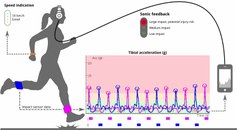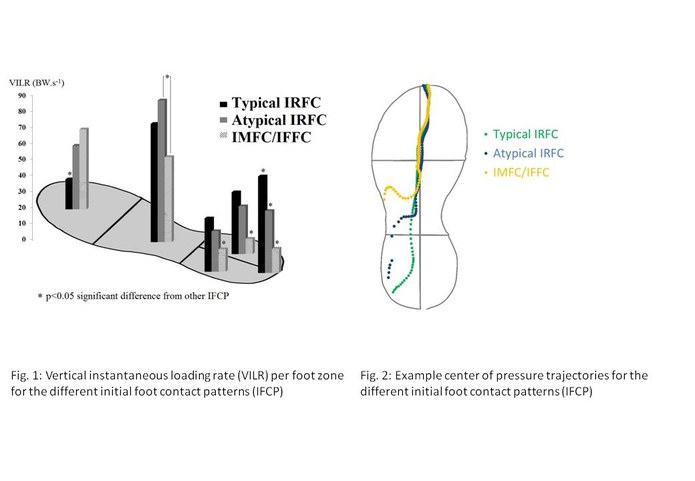Research Biomechanics
The Biomechanics of Human Movement research group led by Prof. dr. D. De Clercq focusses on the following subjects:
Neuromechanical study of walking with a Wearable Assistive Lower Leg eXoskeleton (WALL-X)
dr. Pieter Fiers, dr. Samuel Galle, dr. Bihiyga Salhi, Prof. dr. Wim Derave, Prof. dr. Patrick Calders, Prof. dr. Eric Derom, Prof. dr. Dirk De Clercq (PI)
in collaboration with Prof. dr. Philippe Malcolm (University of Nebraska – Omaha)
WALL-X is a tethered pneumatic powered ankle-foot exoskeleton which enhances walking by assisting the plantarflexors during push-off.
It realized as first to improve walking efficiency above the level of walking with normal shoes (~6% increase in efficiency). Since then, other labs also broke the normal-walking barrier but optimization of the assistance properties improved walking efficiency with an additional 6% (total of ~12% increase in efficiency) ranking WALL-X amongst the best of all exoskeletons.
We also showed that subjects walk longer and carry more load when wearing the exoskeletons compared to walking without them. So far, this study is the only that demonstrates a relevant increase in assisted maximal performance.
Besides implementations in healthy adults, we applied WALL-X in elderly. We showed that also in this population WALL-X assistance is feasible. This enables us to focus on populations with reduced exercise capacity. We will implement WALL-X as a rehabilitation tool in these patients expecting an increase in walking capabilities and therefore improve quality of life.
Key publications:
- Malcolm P, Derave W, Galle S, De Clercq D (2013) A simple exoskeleton that assists plantarflexion can reduce the metabolic cost of human walking.
- Galle S, Malcolm P, Derave W, De Clercq D (2014) Enhancing performance during inclined loaded walking with a powered ankle-foot exoskeleton.
- Galle S, Malcolm P, Collins SH, De Clercq D (2017) Reducing the metabolic cost of walking with an ankle exoskeleton: interaction between actuation timing and power.
- Galle S, Derave W, Bossuyt F, Calders P, Malcolm P, De Clercq D (2017) Exoskeleton plantarflexion assistance for elderly.
Motor retraining by real-time sonic feedback: understanding strategies of low impact running
Pieter Van den Berghe, Rud Derie, Joren Six, dr. Pieter Fiers, dr. Bastiaan Breine, Prof. dr. Marc Leman, Prof. dr. Dirk De Clercq

Key references:
- Van den Berghe P, Six J, Gerlo J, Leman M, De Clercq D. Validity and reliability of peak tibial accelerations as real-time measure of impact loading during over-ground rearfoot running at different speeds. 2019;86:238-242. J Biomech. 10.1016/j.jbiomech.2019.01.039.
- Lorenzoni V, Van den Berghe P, Maes P-J, De Bie T, De Clercq D, Leman M. Design and validation of an auditory biofeedback system for modification of running parameters. 2018. J Multimodal User Interfaces. 10.1007/s12193-018-0283-1.
- Van den Berghe P, Gosseries M, Gerlo J, Lenoir M, Leman M, De Clercq D. Change-Point Detection of Peak Tibial Acceleration in Overground Running Retraining. 2020;20(6):1720. Sensors. 10.3390/s20061720
- Van den Berghe P, Lorenzoni V, Derie R, Six J, Gerlo J, Leman M, De Clercq D. (2021). Music-based biofeedback to reduce tibial shock in over-ground running: A proof-of-concept study. Scientific Reports. 10.1038/s41598-021-83538-w
Initial foot contact patterns in running: relation with speed and impact intensity
Bastiaan Breine, dr. Philippe Malcolm, dr. Pieter Fiers, Prof. dr. Dirk De Clercq
In running, different initial foot contact patterns (IFCP) are possible: initial rear- (IRFC), mid- (IMFC) or forefoot (IFFC) contact. In this project the relation between IFCP, running speed and impact intensity is investigated.
When running at a range of running speeds from 3.2 to 6.2 m.s-1 we recorded ground reaction forces, plantar pressures and lower limb kinematics in a group of 60 endurance runners. We determined the distribution of the different IFCPs with increasing running speed. IFCP was determined with an adjusted strike index method using high frequent (500 Hz) plantar pressure measurements. Furthermore, the relationship between running kinematics and impact intensity was assessed. This was done with a focus on the influence of IFCP.
Succesful public PhD defense on Nov 13 (2015). Link to PhD: http://hdl.handle.net/1854/LU-6999578
Relevant publications:
- Breine B, Malcolm P, Frederick EC, De Clercq D. Relationship between Running Speed and Initial Foot Contact Patterns. Med Sci Sports Exerc. 2014;46(8):1595-603.
- Breine B, Malcolm P, Frederick EC, De Clercq D. Initial foot contact patterns during steady state shod running. Footwear Science. 2013; 5(suppl. 1), p.S81-S82.
- Breine B, Malcolm P, Van Caekenberghe I, Fiers P, De Clercq D. Kinematic differences between (a)typical initial rearfoot and midfoot contact patterns. Footwear Science. 2015; 7(S1),p.S102-S103.
- Malcolm P, Breine B, Frederick EC, Cheung J, De Clercq D. Correlations between strike index and 5,000 and 10,000 m performance in male runners. Footwear Science. 2013; 5(suppl. 1), p.S100-S101.
